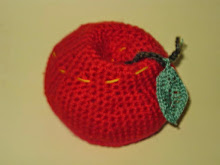I catch the 393 bus to Little Bay, at the end of the line, past Uni of NSW at Kensington, past Maroubra. Walk by Hoop Pines in the old Hospital grounds.
When I worked in a microbiolagy lab at a hospital our lab manager told us a story- Little Bay Hospital once had a leper colony. A visitor was on the beach watching an inmate in a boat fishing. When he threw out the line, the man's arm fell off. "Did you see that!" said the visitor. "Yes" nodded his companion and his head fell off.
Stained glass window in Chapel overlooking the Ocean.
Magnificent clouds over the Pacific Ocean.

A sign along the stairway leading to the beach describes the biodiversity to be found there.
(Click on images to see them more clearly.)
A black elephant snail, Scutus antipoides was put on my foot by a fellow student, long ago.
Seagulls.
Two shags (cormorants) on a rock
Once the rock platform was thickly clothed in Cunjevoi.
Now there are none. Rock pools look empty.
There may be more seashore intertidal life further on, but I was alone there and what if I slipped...?..
I take a closer look. There are limpets.
and black Nerita, it used to be called Melanerita
Some Austrocochlea. The common brown seaweed Hormosira looks like strings of large beads.
A nice surprise is little green seastar! There were two of them.
Black and white Morula. Pink weed.
No more Scutus. Or crabs or sea urchins or green sea lettuce Ulva.
Blue ringed Octopus is deadly poisonous.
All the juicy stuff is scavenged by collectors, to eat or sell. They say it is Asians do it.
The rock platform at Malabar Beach, just to the north, has signs "No collecting". I plan to catch the bus back and go there but I catch the wrong bus.......
Across the way, Botany Bay, is Kurnell. There might be more shellfish there.........
The walk up behind the headland reveals unexpected flannel flowers! One sees them rarely now in Sydney sandstone country. Just a nice remnant of coastal heath with its wildflowers and it is next to a huge golf course. The country of the Australian Aboriginal peoples was beautiful once long ago.
This is a collection of empty seashells, found on the water's edge, that I took home:-
------------------------------------
There is more story, from 30 May 2011- a newspaper clipping:-
Read by clicking on image and use a magnifying glass!
40 year old former Navy medic and eco-vigilante chooses to wear camouflage gear and night vision goggles to video poachers on Long Reef rock platform. The video is given to police.
Whole families take a bus to Palm Beach and use crowbars and tools to prise off the molluscs etc from the rocks. Soon there will be not much left.
...............................................
The practice of plundering marine life was begun 200 years ago. Kate Grenville writes in "The Secret River" how white men pillaged the Hawkesbury River's oyster mounds and live oysters by the ton to ship away for making cement.
We built huge stone Court Houses and Prisons and such. I look at Sydney and tho I love it in my way I feel that so much greater Natural magnificence has been lost. Sacred rocks made into buildings. Sacred ancient trees cut down. Biodiversity of a whole Continent decimated.
I long for and regret what has been lost. We Europeans lost our Dreaming long ago- war etc.
This project of mine on crocheting seashells is just a small reminder that we stand to lose it all, by plunder, pollution, ocean acidity, unless a miracle of conscious change might occur to Value and revere the Natural World.
Many people feel the same- we try to do our best in our own quiet way.
Here is Heterodontus portus jacksoni.
Back in a post of 24/6/ 2010 called "Heterodontus does crochet"
I crocheted a "shark egg"which is a spiral shape.
5 chains. Then 5 stitches in each loop makes 25. Then 5 stitches in those 25 makes 125. Then...... I forget....it looked like a shark egg, black.
My plan was to visit Huskisson to find some real ones, empty, washed up on a beach, to study them.
But I haven't been there yet. Maybe soon.
On Facebook, Rie Tamaru had a beautiful picture of herself scuba diving- she was holding a large live Nautilus in all its beauty. ***18/3/2015 I checked today and yes, the photo is still there.
On You Tube you can see the Soft Corals of Port Stephens with strange sea creatures. Even this is under threat from human carelessness- rubbish, fishing lines- but it was a revelation to me to see such a fabulous unfamiliar ecosystem. *** 18/3/2015 this video is shared on this blog in the next few posts.
-----------------------------------------------
*** 26/1/2015
Videos from YouTube have now been shared on this blog.
If you have the time see "Accidental Eden- Cuba, " especially the coral reefs.
Staghorn corals survive here. The reef is still healthy- you know why? Cuba was forced to grow food organically because no fertiliser was available after the fall of the Soviet Union ~50 years ago........there is advantage in being behind. Modernity costs us a lot.....
What will happen now that America is showing interest in Cuba?
..............................................


















































